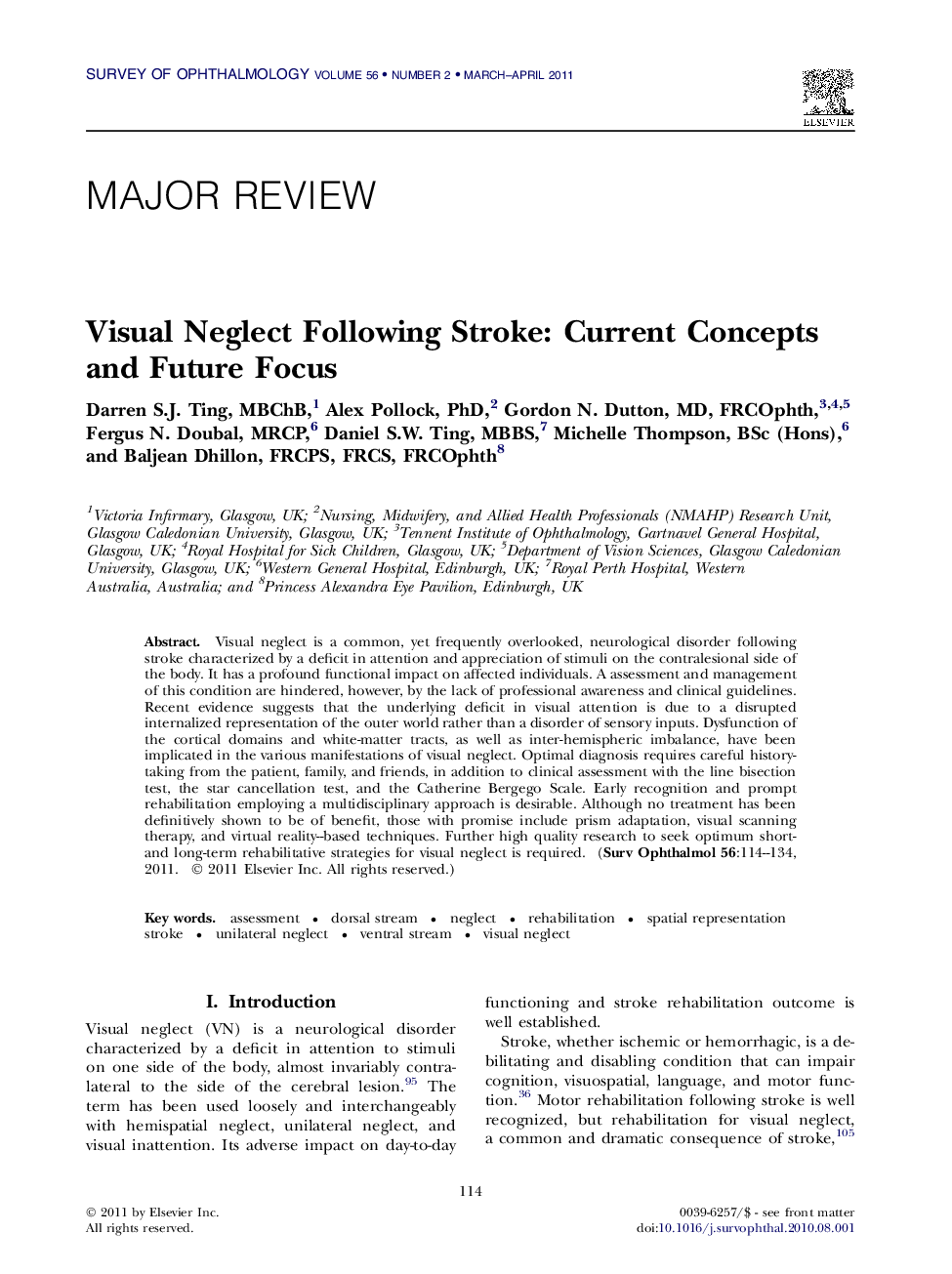| Article ID | Journal | Published Year | Pages | File Type |
|---|---|---|---|---|
| 4032709 | Survey of Ophthalmology | 2011 | 21 Pages |
Visual neglect is a common, yet frequently overlooked, neurological disorder following stroke characterized by a deficit in attention and appreciation of stimuli on the contralesional side of the body. It has a profound functional impact on affected individuals. A assessment and management of this condition are hindered, however, by the lack of professional awareness and clinical guidelines. Recent evidence suggests that the underlying deficit in visual attention is due to a disrupted internalized representation of the outer world rather than a disorder of sensory inputs. Dysfunction of the cortical domains and white-matter tracts, as well as inter-hemispheric imbalance, have been implicated in the various manifestations of visual neglect. Optimal diagnosis requires careful history-taking from the patient, family, and friends, in addition to clinical assessment with the line bisection test, the star cancellation test, and the Catherine Bergego Scale. Early recognition and prompt rehabilitation employing a multidisciplinary approach is desirable. Although no treatment has been definitively shown to be of benefit, those with promise include prism adaptation, visual scanning therapy, and virtual reality–based techniques. Further high quality research to seek optimum short- and long-term rehabilitative strategies for visual neglect is required.
